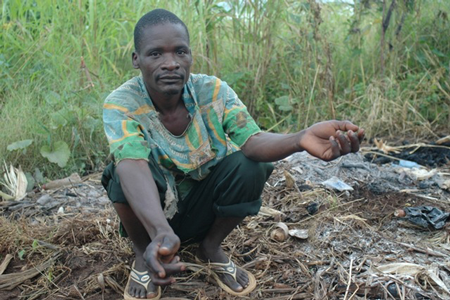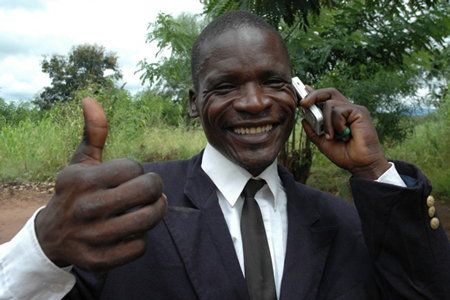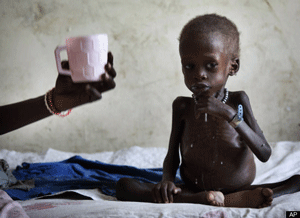Poor/ Not Poor
How many times have you looked at a picture of a forlorn or sick person in tattered clothing accompanying a news story or plea for aid funds, and wondered about the circumstances surrounding that particular shot? For me, these pictures often create a momentary feeling of intimacy—a privileged view into the most private details of someone’s life—that makes me wonder: What was this person doing a few moments before the photographer arrived? Or an hour later? Did the photographer exchange a few words with her subject, or just snap the shot on her way to somewhere else? A fledgling photography project from Duncan McNicholl, an aid worker with Engineers without Borders Canada working on water and sanitation in Malawi, probes the familiar conventions of poverty porn. In the project he’s calling “Perspectives on Poverty,” Duncan presents two photos of the same subject side by side, “to show how an image can be carefully constructed to present the same person in very different ways.”
From Duncan’s blog post:
Edward [pictured above] is quite successful, both as an area mechanic and through other business initiatives. He grows tobacco, works with a basket weaving business, collects rent from a shop he rents out in the market, and services over 60 water points in his area. Next year, he is thinking of investing in a truck to start a transportation business. He is a great example of how little a thatched roof says about someone’s livelihood.
Edward was pretty excited about the project, but he had a pretty hard time keeping a straight face for the photos of him trying to look "poor." He looked so ridiculous that I’ve included one of the photos in the set. The photos of Bauleni Banda [not pictured here] had the same kind of hilarity, with community members shouting out helpful hints on how to "look more poor." Neither had any trouble putting on their best and looking sharp.
Read his post for more context and check out other pictures here. Looking forward to more as the project progresses.
Hat tip to Owen (whom we’ve cited before for his posts on how PlayPumps are really being used in Malawi), blogging at Barefoot Economics.
 From Aid to Equality
From Aid to Equality




